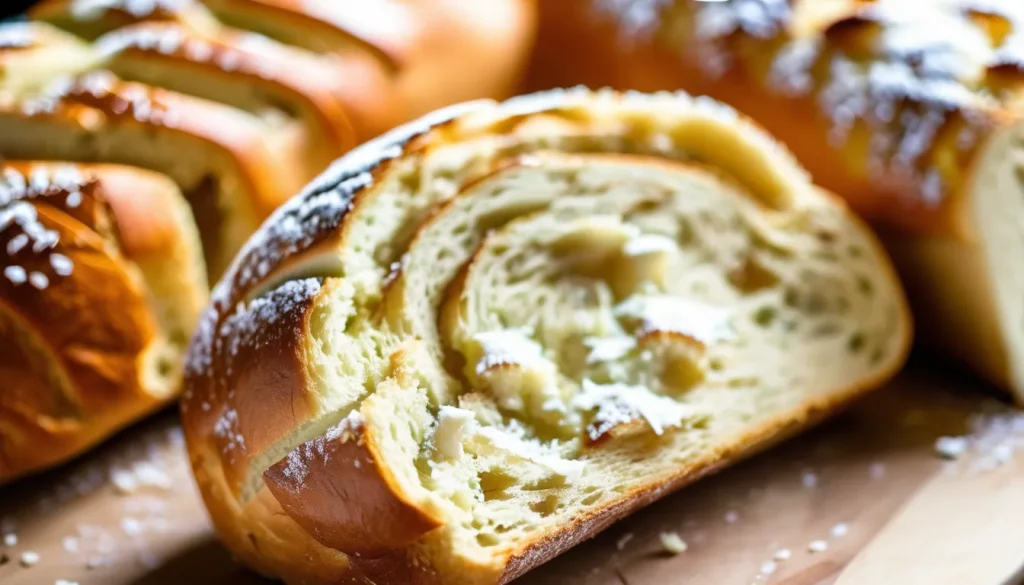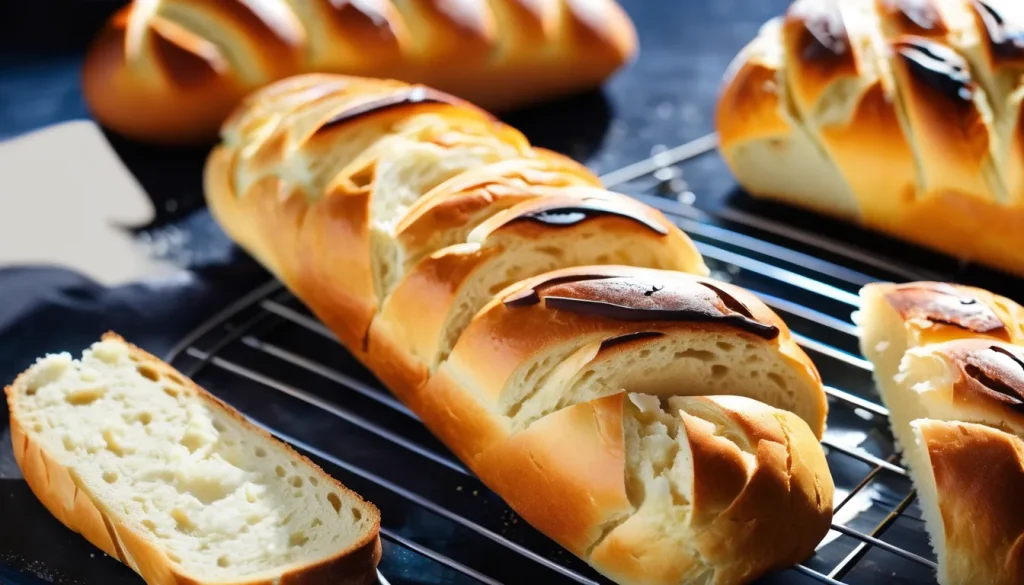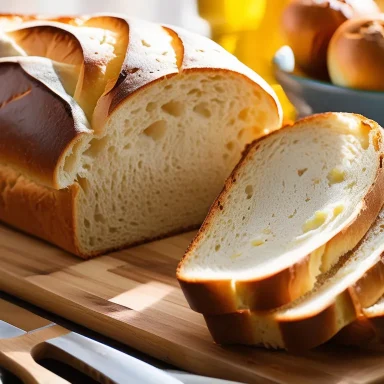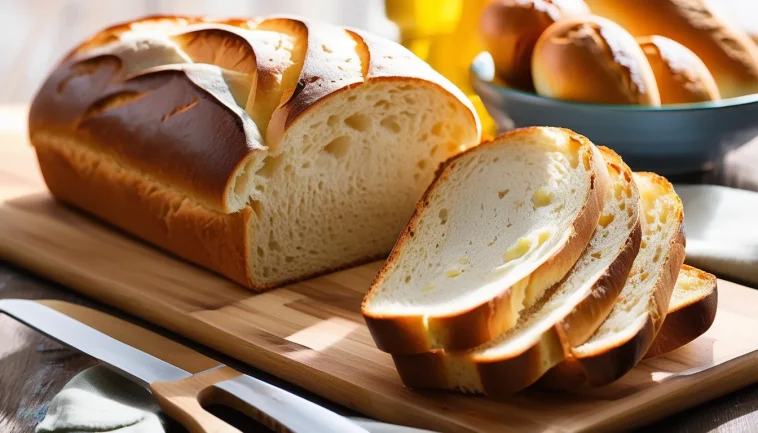French bread Recipe, known for its crispy crust and soft, airy interior, has a rich history that dates back to ancient times. Its origins can be traced to France, where the tradition of baking artisanal bread flourished in the 19th century. The baguette, a quintessential symbol of French culture, became popular as bakers began to use steam ovens to create that signature crust. Today, French bread is cherished worldwide, not only for its delicious taste but also for its versatility in a variety of dishes.
Why I Love French Bread Recipe
I love making French bread Recipe because it connects me to a centuries-old tradition of baking. The process of kneading the dough, watching it rise, and finally shaping it into loaves feels meditative and fulfilling. Each step is an opportunity to engage with the ingredients, and the aroma that fills my kitchen is simply unbeatable. There’s something magical about taking simple elements like flour, water, yeast, and salt and transforming them into something so delightful.
Another reason this recipe holds a special place in my heart is its versatility. French bread Recipe can complement any meal or be enjoyed on its own with a bit of butter or olive oil. Whether it’s a casual weeknight dinner or a fancy gathering, freshly baked French bread elevates the experience. Sharing this loaf with friends and family creates moments that linger long after the last crumb has been eaten.

Serving Suggestions For French Bread Recipe
French bread Recipe is incredibly versatile and can be enjoyed in numerous ways. Here are some delightful serving suggestions:
- Classic Sandwiches: Use French bread as a base for gourmet sandwiches. Layer it with cured meats, cheeses, and fresh vegetables for a delicious lunch option.
- Garlic Bread: Slice a loaf in half, spread it with garlic butter, and toast it in the oven for a flavorful side dish that pairs perfectly with pasta or salads.
- Bruschetta: Toast slices of French bread and top them with diced tomatoes, basil, and a drizzle of balsamic glaze for a fresh and vibrant appetizer.
- French Toast: Use day-old French bread to make rich and fluffy French toast. Top with maple syrup and fresh fruit for a decadent breakfast treat.
These suggestions highlight the many ways French bread can enhance your meals, making it a staple in any kitchen.
Variations For French Bread Recipe
French bread Recipe can be easily adapted to suit different tastes and occasions. Here are some creative variations:
- Herb-Infused Bread: Incorporate fresh or dried herbs like rosemary or thyme into the dough for a fragrant twist that complements savory dishes beautifully.
- Olive Bread: Fold in chopped olives for a Mediterranean flair. This variation adds a salty, savory element that’s perfect for antipasto platters.
- Whole Wheat French Bread: Substitute some of the all-purpose flour with whole wheat flour for a healthier option that still delivers on flavor and texture.
- Sweet French Bread: Add sugar and cinnamon to the dough for a lightly sweet bread that’s delightful for breakfast or as a dessert.
These variations allow you to experiment with flavors while still enjoying the foundational qualities of classic French bread Recipe.

Storage and Shelf Life For French Bread Recipe
To ensure your homemade French bread Recipe stays fresh and enjoyable, proper storage is key. Here are some effective ways to store it:
- Room Temperature: For short-term storage, keep your French bread in a paper bag at room temperature. This allows the crust to remain crisp while the inside stays soft. It’s best consumed within two days.
- Freezing: For longer storage, wrap the bread tightly in plastic wrap or aluminum foil, then place it in an airtight freezer bag. French bread can be frozen for up to three months without losing its flavor or texture.
- Reheating: When you’re ready to enjoy frozen bread, simply preheat your oven to 375°F (190°C) and bake for about 10–15 minutes to restore its crusty exterior and warm interior.
- Avoid Refrigeration: It’s best to avoid storing French bread in the refrigerator, as this can lead to a stale texture.
By following these storage tips, you can enjoy your French bread at its best, whether it’s freshly baked or saved for later.
Health Benefits Of French Bread Recipe
French bread Recipe can be a delightful part of a balanced diet, especially when made with wholesome ingredients. Here are some of the health benefits it offers:
- Fiber Content: When made with whole grain flours, French bread provides a good source of dietary fiber, which aids digestion and promotes a feeling of fullness.
- Nutrient Absorption: The fermentation process used in traditional bread-making enhances the bioavailability of nutrients, making it easier for your body to absorb vitamins and minerals.
- Energy Source: French bread is primarily composed of carbohydrates, providing a quick and efficient energy source for your daily activities.
- Versatile Ingredient: Its adaptability allows for healthy toppings and pairings, such as avocado, lean proteins, or fresh vegetables, making it easy to incorporate into nutritious meals.
Enjoying French bread mindfully can contribute positively to your diet, allowing you to savor its flavors while reaping health benefits.


French Bread Recipe
Equipment
- Mixing bowl
- Measuring cups and spoons
- Dough scraper
- Baking sheet
- Parchment paper
- Oven
Ingredients
- 4 cups all-purpose flour
- 1½ cups warm water
- 2 teaspoons active dry yeast
- 1 tablespoon salt
- 1 teaspoon sugar
Instructions
- Activate Yeast: In a mixing bowl, combine warm water, sugar (if using), and yeast. Let it sit for about 5-10 minutes until frothy.
- Mix Dry Ingredients: In a separate bowl, whisk together the flour and salt.
- Combine: Gradually add the flour mixture to the yeast mixture, stirring until a rough dough forms.
- Knead: Turn the dough onto a floured surface and knead for about 10 minutes until smooth and elastic.
- First Rise: Place the dough in a greased bowl, cover with a cloth, and let it rise in a warm place for about 1-2 hours, or until doubled in size.
- Shape Loaves: Punch down the risen dough and divide it into two equal pieces. Shape each piece into a loaf.
- Second Rise: Place the loaves on a baking sheet lined with parchment paper. Cover and let rise for another 30-45 minutes.
- Preheat Oven: While the dough is rising, preheat your oven to 450°F (232°C).
- Score and Bake: Just before baking, make a few shallow slashes on top of each loaf with a sharp knife. Bake for 25-30 minutes until golden brown and hollow-sounding when tapped.
- Cool: Allow the loaves to cool on a wire rack before slicing. Enjoy your homemade French bread!
Related Video
Related Notes
- Ingredient Quality: Use high-quality flour for better flavor and texture. Bread flour can be used for a chewier crust.
- Water Temperature: Ensure your water is at the right temperature (around 110°F or 43°C) to activate the yeast without killing it.
- Kneading: Knead the dough until it’s smooth and elastic; this usually takes about 10 minutes. This develops the gluten, which is essential for the bread’s structure.

